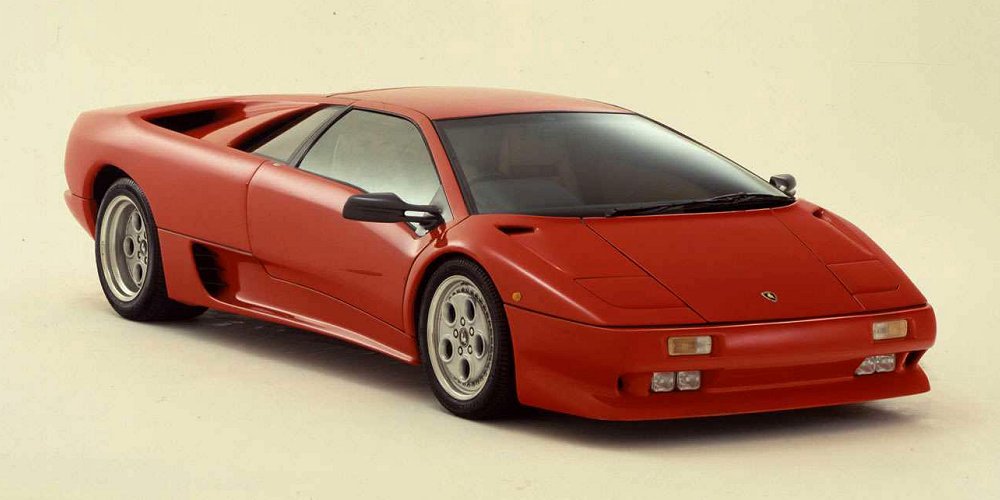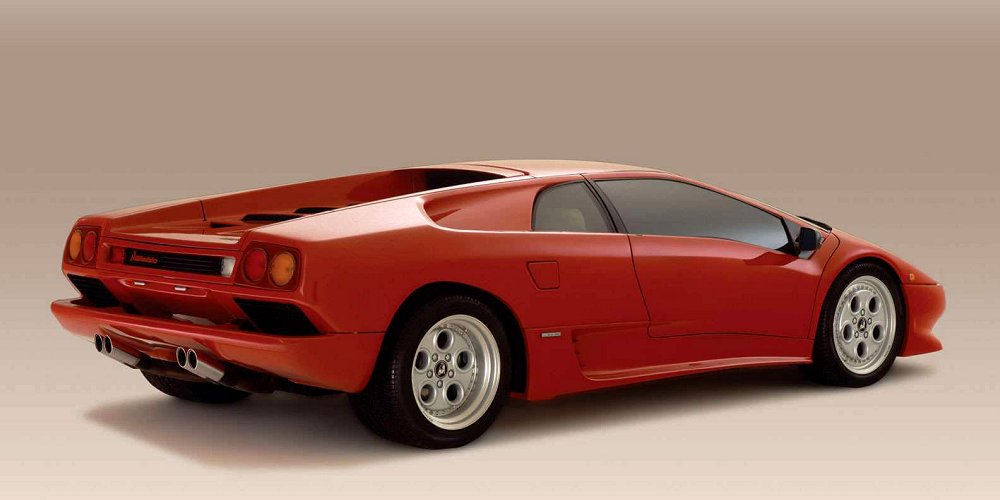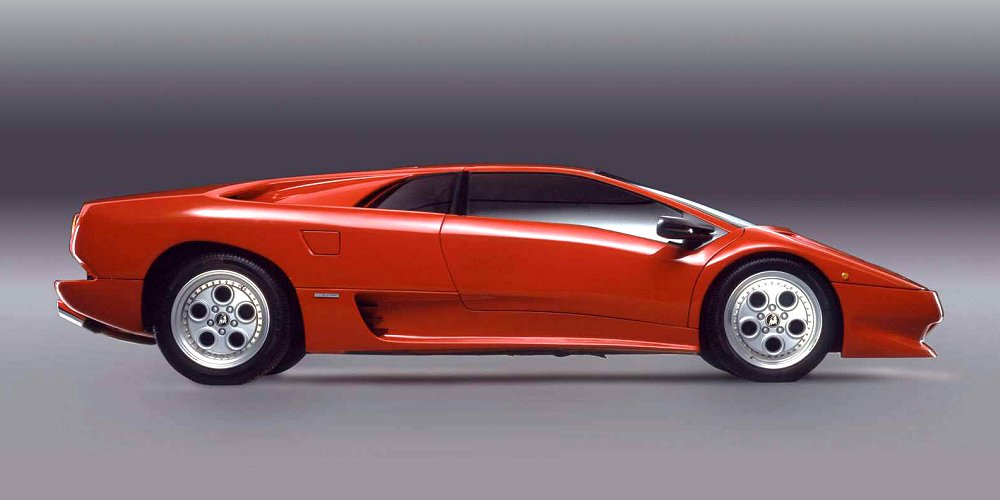Description
The Lamborghini Diablo, introduced in 1990, was the car that carried Lamborghini into a new era of modern supercars while preserving the wild spirit that had defined the brand since the Countach. It was the first Lamborghini capable of exceeding 200 mph, the most powerful road car the company had ever built at its debut, and a bold expression of Italian design and performance at the dawn of the 1990s. Named after a legendary fighting bull that fought in Madrid in 1869, the Diablo—meaning “devil” in Spanish—was an apt name for a car that looked and behaved like something born from fire and speed.
The Diablo was conceived in the mid-1980s as the successor to the Countach, with the project internally codenamed “Project 132.” Lamborghini’s then-owner, Chrysler Corporation, wanted a car that would retain the brand’s flamboyant character while improving drivability, refinement, and aerodynamics. Marcello Gandini, who had designed the Miura and Countach, was again responsible for the initial design, though Chrysler’s styling team refined it slightly for production, smoothing some of Gandini’s most extreme angles while maintaining the car’s sharp, muscular proportions. The result was both aggressive and elegant—a wedge of precision and purpose that embodied Lamborghini’s essence while introducing a new level of sophistication.
At its heart lay an evolution of Lamborghini’s iconic V12 engine, now enlarged to 5,707 cc and fitted with four valves per cylinder. The engine produced 492 horsepower at 7,000 rpm and 580 Nm of torque at 5,200 rpm, sending power to the rear wheels through a five-speed manual transmission. The gearbox sat ahead of the engine, with a driveshaft running back through the sump to the differential—an arrangement inherited from the Countach. The Diablo could accelerate from 0 to 100 km/h (62 mph) in 4.5 seconds and reach a top speed of 325 km/h (202 mph), making it the fastest production car in the world at its launch.
The chassis was a tubular steel spaceframe clothed in aluminium and composite body panels, offering both rigidity and lightness. Suspension was fully independent with unequal-length wishbones, coil springs, and Koni dampers, while ventilated disc brakes provided immense stopping power. The Diablo introduced a significant leap in refinement: it was more stable at high speeds, more compliant over uneven surfaces, and easier to control than the Countach, while still delivering the raw excitement that defined a Lamborghini.
Visually, the Diablo was a masterpiece of proportion and intent. The low-slung nose, hidden pop-up headlights, wide rear haunches, and massive air intakes gave it an unmistakable presence. The scissor doors, a Lamborghini trademark since the Countach, returned unchanged. Every angle served both aesthetic and functional purposes: the flowing lines improved aerodynamic efficiency, while the rear buttresses and engine cover vents managed airflow and cooling for the V12. It was both elegant and menacing—a car that could dominate a racetrack or stop traffic on a city street.
Inside, the Diablo marked a major step forward in comfort and ergonomics. The cabin was wider, with improved visibility, air conditioning, and sound insulation. The leather-trimmed interior featured adjustable seats, power windows, and a modern dashboard with clear instrumentation. Unlike the Countach, which had been raw and minimalist, the Diablo offered genuine comfort for long journeys while still delivering a pure driver’s experience. The view forward over the wide fenders and the deep rumble of the V12 behind the driver made it clear that this was still a true Lamborghini in every sense.
On the road, the Diablo delivered a combination of brute force and balance. The V12’s power came in a seamless wave, with a soundtrack that ranged from a deep growl at idle to an explosive shriek at redline. The unassisted steering was heavy at low speeds but alive and communicative once in motion, and the handling was remarkably composed for such a powerful car. The Diablo demanded respect but rewarded skill—it could be savage if mistreated, yet graceful in the hands of an experienced driver.
The original rear-wheel-drive Diablo was followed by numerous variants that refined and expanded its capabilities. In 1993 came the Diablo VT, the first Lamborghini with all-wheel drive, providing enhanced traction and stability. Later versions included the lighter Diablo SV (Super Veloce), the track-focused Diablo SE30 and SE30 Jota, and the highly developed Diablo GT and GT-R. Each evolution built upon the original’s foundation, adding power, technology, and aerodynamic sophistication, but the essence of the first Diablo—the purity of its shape, the immediacy of its engine, and the drama of its presence—remained unchanged.
Between 1990 and 2001, over 2,800 Diablos were produced, making it one of Lamborghini’s most successful models. It bridged the gap between the analog brutality of the Countach and the technological refinement of the Murciélago that succeeded it. It was also the last Lamborghini developed entirely around the naturally aspirated V12 without electronic aids—an unfiltered connection between driver and machine that modern supercars rarely replicate.
Today, the Lamborghini Diablo is celebrated as a pivotal model in the brand’s history. It defined the supercar of the 1990s with its mix of power, presence, and mechanical purity. More than three decades after its debut, it still looks futuristic, still sounds ferocious, and still commands awe wherever it appears. The Diablo was not just a successor to the Countach—it was a statement that Lamborghini’s spirit of defiance and innovation remained alive and unstoppable.


